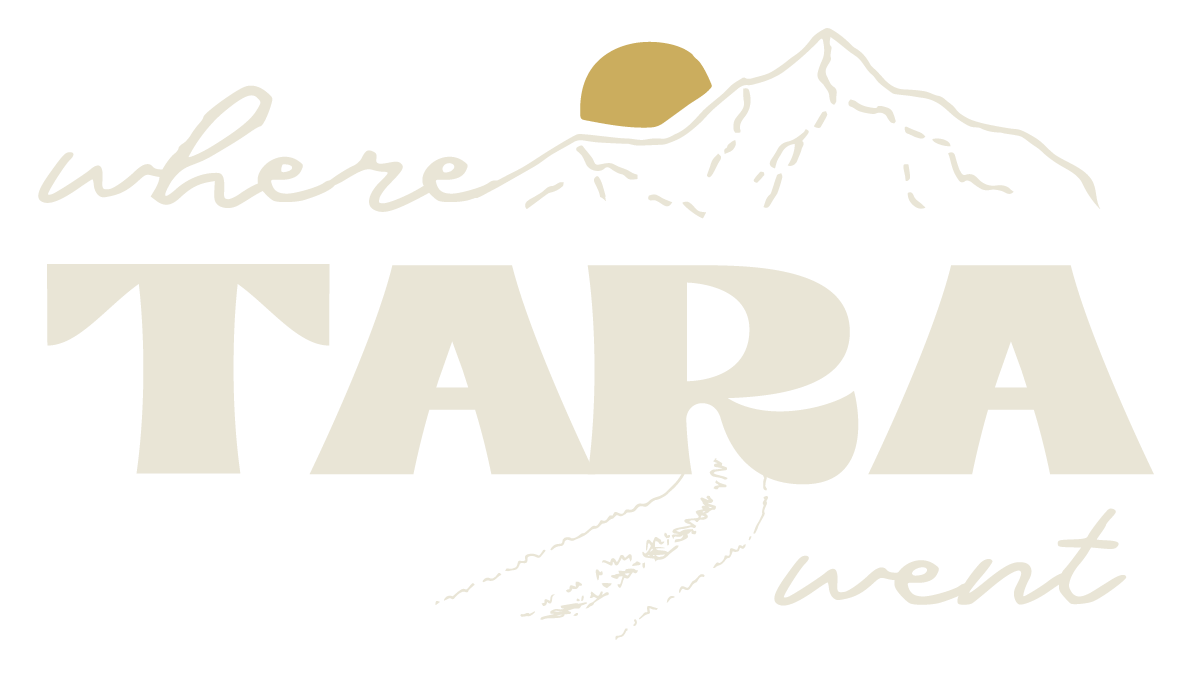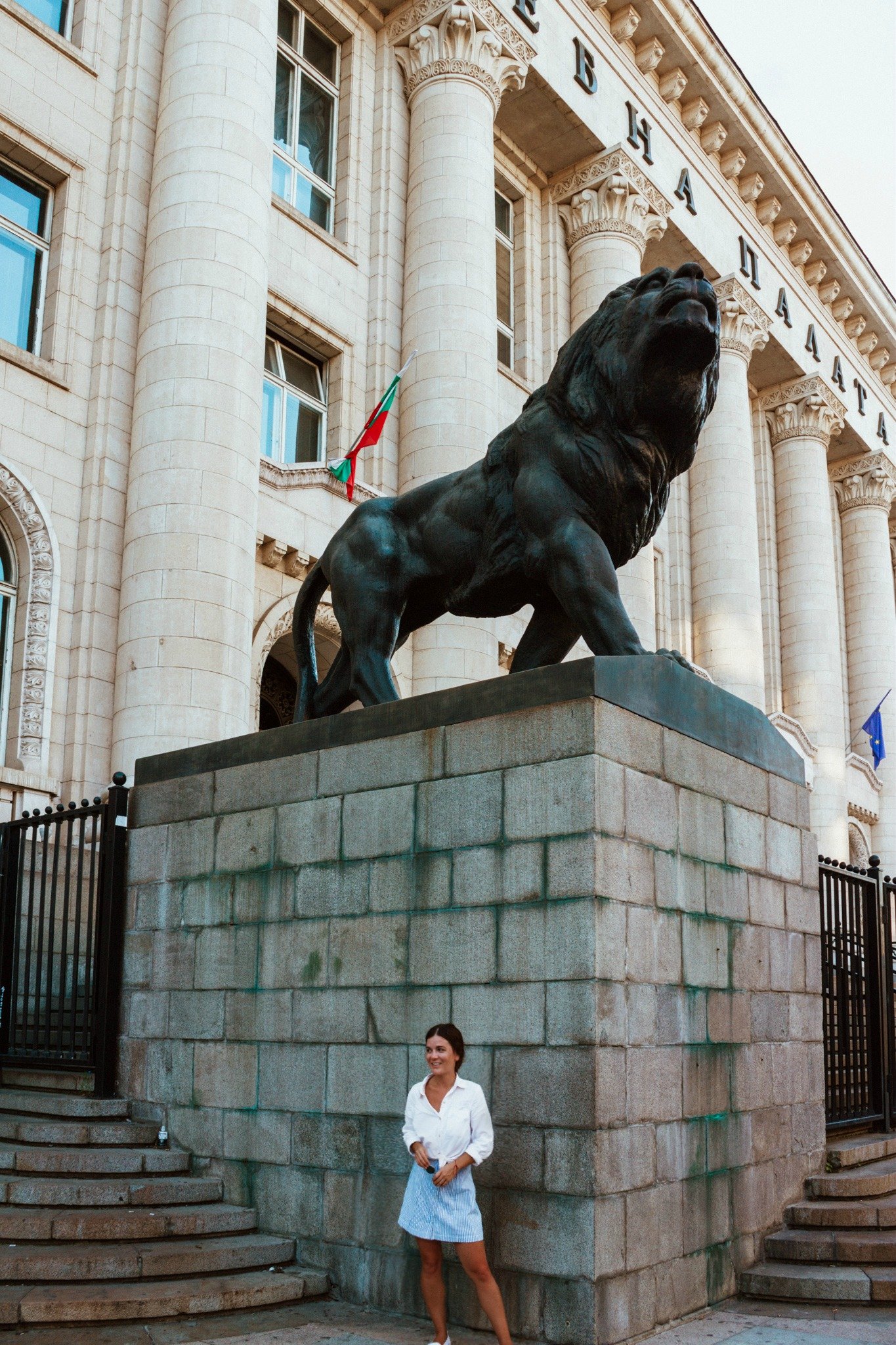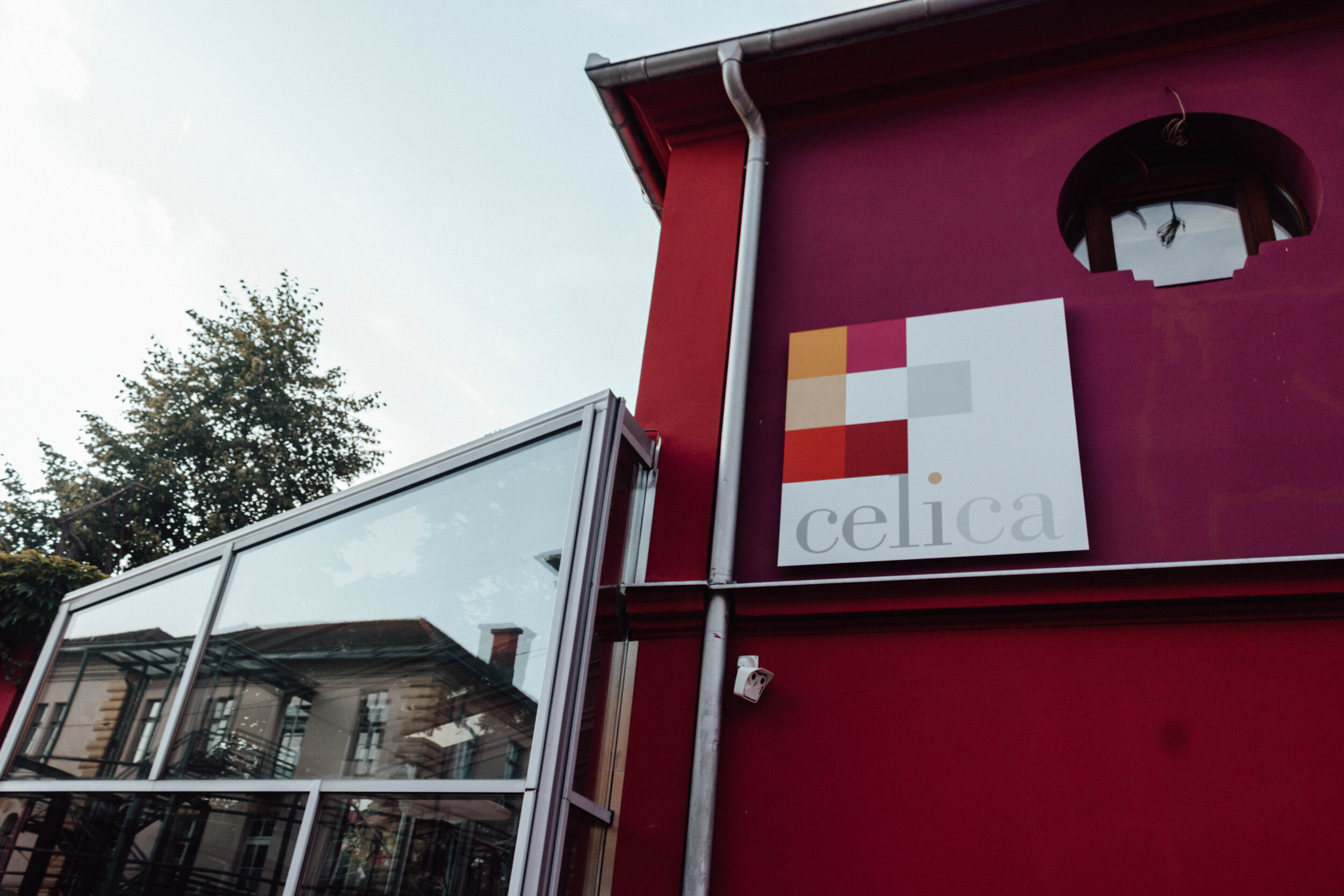How to Plan a Trip to Europe: the Ultimate Step-by-Step Guide
This post is your ultimate mega-guide for planning a trip across Europe. No matter your budget, priorities, or flexibility, this guide is filled with resources to plan an epic multi-city, multi-country trip across Europe.
Planning a trip to Europe is equal parts exciting and overwhelming. With so many countries, cultures, and activities to choose from, having a solid plan in place for your trip will insure it’s stress-free and as enjoyable as possible. That’s where this ultimate step-by-step guide comes in! I’ve created this mega guide to Europe as a foundational resource to help you plan a trip that suits your budget, timeline, and interests, so you can make the most of your European adventure. This guide will take you through every single step of planning a trip to Europe: from budget and timeline to itinerary and transport.
Despite having travelled my entire life, it wasn’t until I was in my twenties that I found my own style of trip planning. Over the years, I’ve become the Google Maps Queen, a Notion app fanatic, and a firm believer in the power of Pinterest to prepare myself for international travel.
But for first-timers travelling across the European continent, it might seem overwhelming to know where to start. Where should you go, and how do you get there? There are a number of other details that you have to think about too, like where to stay, where to eat, and what to see and do in each destination, as well as figuring out how to maximize your time in a place. To help you out, I’ve put together this resource to guide you through the step-by-step process of planning a trip to Europe.
travel documents for europe ↴
The first major thing to get in order are your travel documents. Having your document ducks in a row eill mean you can travel from county to country without any worries or issues.
To explore Europe, you’ll need/want the following documents:
Passport | You need a passport. It’s recommended that your passport have 6 months validity. You’ll want to make sure you have plenty of passport pages empty, especially if you are heading to the Balkans region because, as of summer 2019, nearly every country we entered by bus or train stamped.
Driver’s license/ International driver’s license | If you are thinking about renting a car for a portion of your journey, which I highly recommend you do, you’ll need to show a valid driver’s license. Some countries do require an international driver’s license, so check this before you book a car.
Copies of travel documents | This isn’t a necessary document, but if/when a travel mishap occurs, you’ll rest a little easier with physical copies of your travel documents. A copy of your passport, driver’s license, and travel insurance makes everything sail a bit smoother when times get tough.
my step-by-step travel planning process ↴
This is step-by-step how we sorted a majority of our summer European travels. I realize to the outside eye this might look super stressful. I promise it isn’t as time-consuming as it looks. I like a good mix of stumble-upon adventures and planned exploration. I don’t think travel should be so rigidly planned that there’s no room for spontaneity. Of course, this isn’t the only way to plan a trip. For me, travelling for long bouts is less overwhelming with some preparation beforehand.
step 1: consider your time frame + season of travel
I always start planning by looking at my time frame and season and creating a rough draft outline. Knowing how much time you have to travel makes it easier to figure out the logistics of everything else— budget, travel discounts, transport, and accommodation.
For example: If you have a 4-day weekend to travel but your destination of choice takes a day to get to and from, you actually only have two days in your chosen destination. If you arrive early in the morning on the first day, however, you can squeeze in three days of exploring. You also can weigh whether 2-3 days in a place is worth the cost of a flight, the price of accommodation, or if it’s enough time to see what you’d like. If you have 3 months to venture around, you’ll have more room to play with, but more prepping to do.
Considering the season you’ll be travelling is also important. I’m fond of shoulder-season travel since prices dip and there are usually fewer people. But, I’ve had to rearrange plans in consideration of the weather. An example of this is our trip to Nepal. We had planned a hiking trip in Nepal, but upon looking further we realized we would be going during heavy rains. It wasn’t worth the expense to risk getting all the way there and not being able to do the hike, so we rebooked for peak hiking season. However, visiting Italy in the summer means unbearable heat and monstrous crowds, so opting to visit in the autumn might be optimal.
step 2: research where to go
The first question you should ask yourself is, what do I like to do? Time is the one thing in this life we never get back, so make sure you spend going places and doing things that excite and interest you!
There’s no point spending the time or money hiking through the Dolomites if nature doesn’t interest you. It would be kind of strange to plan a holiday in Paris if I am not excited by the idea of going there. Don’t pick a destination just because it’s all over your Instagram feed. Go places that intrigue you.
I suggest creating a list or spreadsheet with all the places you’d like to visit, and then adding why you want to go there. For instance, I wanted to head to Bosnia for the history and I wanted to visit Slovenia for the scenery. These little notes allow you to pick your destinations and have more meaningful experiences. Don’t forget, marking your reason for visiting a place as “just curious” is reason enough to go. But, if there’s a city on your list and you can’t think of a single reason why you want to go there, strike it and move on. A list of places will allow you to create a general itinerary so that you can begin planning your moves between places.
step 3: research each considered destination
This is when I take my narrowed-down list and start my research. I know that many of my best finds have been those I’ve stumbled upon once my feet are on the ground or I’ve gotten a recommendation from a local. Sometimes the best moments are the unplanned ones, but planning a trip, especially one that lasts for months, requires at the very least some research. For each destination, I look for all the information I can find and add it to either a spreadsheet or a Notion page.
questions to answer in travel research
Where are we going:
What countries are I interested in visiting?
What cities within those countries should I look into visiting?
What am I going to do:
What are the major landmarks to see and activities to do?
Do any of these activities need booking in advance?
What hidden gems can I find?
Are there any big events or cultural festivals happening while I am there?
What + where am I eating:
What are the best restaurants and what local foods are “must-eats”?
What cool cafés are there?
What is my budget:
What does accommodation cost in each city?
What does the average meal cost?
How much do museums, events, and attractions cost?
How much are groceries typically?
How will I get around:
How can I get from one place to another?
Is there public transport available?
Additionally, if you work in media, like me, think about what partnerships, exchanges, and brand work you can do. This may affect your planning, but it could help you earn money while you’re on the road or, at minimum, save you money. This is also the stage where I begin outlining how many days are optimal for each city/town/place.
As a travel writer and a blogger, I also add a column for content to shoot. If I have a brand partnership or a sponsored post to put up that might organically make sense for a certain destination, or if I have a shot in mind, I’ll note it here. The “helpful links” column is where I add any blog posts, news articles, or websites with information about the place that I’ve read and think might be useful during planning (or once we arrive).
Again, I don’t find it labour-intensive and I’m not strict about filling in all the columns. I have just found that, on long trips, having spreadsheets helps keep everything organized and makes planning breezier.
Here’s a snippet of how I use spreadsheets in my Google Drive for planning:
Here is an example of how I use Notion for planning:
step 4: look at your budget
Now, it’s time to do the not-so-fun bit: figuring out a budget. Luke and I work backward, but we like to look at our budget after we’ve looked at the details of things. Is it affordable to do all the things we want? To stay where we’d like? Can we work with any companies in partnership? Do we need to save more so that we can afford to do everything?
We’ve never skimped out on anything, and we’ve always managed to make our “budget” work. But, I would rather postpone going somewhere I can’t afford comfortably than go somewhere completely out of my budget where I’ll be missing out on things. For instance, we are dying to go to Iceland but want to make sure we can splash out while we’re there, so we have kept it on our travel wish list for a later date when we’re ready to commit to the spend.
Some people make budgeting their “step 1”. I like to do my research, see what amount of time I’m playing with, and gather information and estimates of costs before I write it off in my mind. Looking at the details makes it easier to get creative, cut costs where you can, and look at alternative destinations if the expense is exponentially greater than I expected.
tips for budget travellers
Back in my shoestring-budget backpacker days, I liked using apps to help me track my spending along the way. This might be a good option if you’re wanting to travel with tight funds, as it will allow you to manage your finances as you go.
Helpful apps for budget travellers include:
Mint
Splitwise
Trail Wallet
Steph My Life’s savings plans
step 5: navigation + transport
At this stage of the planning, Luke steps in with the major logistical help. It seems that since I have started travelling with Luke, I’ve really leaned on his You’ll need to get to Europe, which likely requires an international flight at the start, unless you’re based here. Europe is so well-connected by trains and buses once you get there, it’s easy to find different ways to get around. We looked at our list of stops, ran them all through flight search engines to find the best deal from London, and found that from London to Portugal made the most sense. Eliminating air travel as much as possible for the environment, from there we utilized trains, buses, and BlaBlaCar. Take a look at where you want to go and your time allowance, and begin playing with routes.
Here’s a look at our entire summer route and a key to show you how we got around:
step 6: book accommodation
I have, on occasion, booked my accommodation before I have booked my transport. During our sojourn through Europe, we often booked our accommodation well ahead of time to insure we had a good place to sleep, and then later booked transport. Because our time frames were relatively loose, we were able to be more flexible regarding how we got from A to B. See what’s available and what areas are recommended for visitors to stay in. Always look at Google Maps to check on your hotel or hostel’s location. I go into more depth about all of this a little later on.
We love using Booking.com to book the best places to stay around the world.
step 7: city mapping
For nearly every place I go, I create a Google Map with landmarks, eateries, photo spots, and day trips marked and coded. At first glance, it probably seems incredibly time-consuming, but I promise it’s not. After you’ve made it to this step in the planning process, you’ll probably have a list already made and simply enter an address or name into the Google Map search box to pin it.
These maps make it a lot easier once you arrive to plan out your days, know what’s close to what, and figure out how to get from place to place. I also recommend downloading your map offline so that you can access it with or without internet.
Here is an early example of a city map I made for our trip to Seoul, South Korea →
transport around Europe ↴
In this section, I break down my favourite resources for booking transportation into and around Europe. Below are my go-to resources for finding transport sorted by travel type for your convenience.
international air travel to Europe
Skyscanner- I love Skyscanner’s “everywhere function”. If you have more flexibility, I highly recommend playing with this feature to find the cheapest flights.
Momondo- This site feels really hit and miss to me. Every time I’ve gone to use it, the prices change almost immediately upon clicking through to book. Some people swear by it, but I am not one of them.
Norwegian Air- I don’t love recommending Norwegian Air, since they frequently change their baggage policies and charge hefty fees for just about everything {your in-flight meal, snacks, entertainment, etc. all costs additionally}. In my experience, their customer service is also severely lacking, but I continue to book with them for budget Transatlantic flights.
Google Flights- This is my second-most used flight search engine and I’ve found awesome international deals
Booking with airlines directly- Booking direct is great for those who, like Luke, love airpoints and loyalty programs. It’s also a safe bet. If a flight gets cancelled or delayed, dealing with an airline is much less painful than dealing with a third party operator.
air travel within Europe
There are plenty of budget airlines that fly throughout Europe. We flew as little as possible on our summer adventure, but we have previously flown for winter getaways and city breaks. Here are some of the airlines we feel are good value for minimal money. Eco tip: don’t forget to offset your carbon emissions!
WIZZ Air
Ryan Air
EasyJet
train travel in Europe
We found that it was often cheapest and easiest to arrive at the train stations early and book directly at the station. However, we also found some great online resources for booking train tickets. Seat61 was particularly helpful when planning our train trips from Istanbul to Sofia and from Montenegro to Serbia.
Seat61- a great resource for information and detailed explanations of the train systems specifically in Turkey and Eastern Europe
bus travel in Europe
Similar to trains, we found ourselves booking some of our bus journeys at the bus station. In places like Eastern Europe, this was usually less complicated than attempting to book online and, in some cases, was the only option.
Comparabus- the best site by far that we found to compare bus prices in whatever region we were travelling, ie. what coachline is cheapest?
FlixBus- buses throughout Europe
Ecolines- affordable {and pretty swish} buses in the Baltic
car rental in Europe
The best way to find a deal is to Google search “car rental in *insert your location*”. We found the best deals through Enterprise, but it’s all dependent on what discounts are on offer, your age {25+ year-olds get better rates} and route {it’s usually more expensive to rent a car at one location and drop it off at another}.
Enterprise- car rental company we used on our road trip through Bosnia
ride-sharing in Europe
how to find accommodation across Europe ↴
Accommodation varies widely throughout Europe. It doesn’t matter if you’re staying in hotels, hostels, homestays, or Airbnb, in my experience the quality has a real range. Some private rooms in hostels were nicer than the hotels I’ve stayed in. Despite Airbnb being one of my preferences, we have had a few that were troublesome (creepy hosts, dirty sheets, etc.).
When it comes to accommodation for Luke and myself, we tend to look for something private that’s in a good location. If we are travelling for a long duration, we also look for reviews that mention reliable WiFi and often look for a kitchen and a washing machine if possible. In Europe, it’s really easy to tick most, if not all, of these boxes.
Getting into the city center of most cities in Europe is pretty easy, so you can save a lot of money by finding accommodation that is a little farther outside of the city and walking or using the city’s transportation system. You can find great value for money if you’re willing to stay even 10 minutes away from the main tourist hotspots.
Here’s a breakdown of European accommodation, where to find the best deals, and other items to consider:
accommodation amenities to consider in Europe
Having stayed in my fair share of hotels, I like to think I’m well-versed when it comes to amenities. Every person is going to have different needs and preferences. For instance, some might need wheelchair access, others might require late check-in. Our three main preferences included breakfast, internet, and free booking cancellation.
Included breakfast
I’m a café girl through and through. I want to hop and hit up every café in a city so I can find the best brunch and coffee. However, one of the first things I learned when travelling around with Luke is that the man needs his breakfast first thing when he wakes up. That’s why, when we have the option of an included breakfast, we nearly always book it. It makes it easy for Luke to start the day extra early and puts him in a good mood for when I inevitably ask him to sit at a café and watch while I eat brunch. It’s a compromise that works well for the two of us.
Free cancellation
You never know what’s going to come up on a long trip but, regardless, you want flexibility. Free cancellation policies are great if you decide to stay longer in place, miss your bus and need to rebook or find somewhere unexpected you want to stay thus pushing back your itinerary.
WiFi
Having WiFi when I travel for long bouts is a non-negotiable now that I work remotely. Sometimes the coolest hotels have terrible WiFi and it’s nice to know this ahead of time.
types of accommodation to consider in Europe
I’ve only stayed in a handful of resorts in my time {one in Mexico, a number around Asia, and one in New Zealand}. Some people never even leave their resort, especially if their holiday package is inclusive of food and drink. I’m not sure resort accommodation suits long-term travel the way we mosied around Europe. Thus, I’ve kept it off this list. We’ve enjoyed shorter stays at eco-resorts in places we’ve already explored thoroughly, which made a bit more sense to us, but if you rather pony up the money for this kind of luxe on a round-the-continent trip, more power to you! It just didn’t quite fit our travel style for these adventures.
hotels
Tourists might begin their search for a place to stay by looking into hotel deals, but budget travellers shouldn’t be turned off. Luke and I have found hotel rooms that were actually cheaper than private rooms in hostels or Airbnb stays. Most of these deals were uncovered after comparison shopping on the right sites.
A note on the European star system: It’s a bit rubbish. The gist is that the more stars that a hotel has out of 5, the better their service and amenities. The star rating system in Europe doesn’t take into account the general atmosphere of a place and it definitely doesn’t take into account the value or customer service offered. Officials from tourism boards inspect the accommodation and give a star rating based on pre-determined criteria that varies from countryy to country and is based on things like whether or not the property has an elevator. Personally, I have almost never made a hotel decision based on star ratings. Instead, I’m more interested in customer reviews. The star system is also flawed in that it varies widely by country.
Here is a list of our favourites to browse for hotels:
Airbnb
Airbnbs are my personal preference when booking accommodation. Typically, locals rent out their properties. You might book a shared or private room, or an entire house.
I know that many European Airbnbs don’t seem to have the best reputations and that the ethics surrounding Airbnb stays are cloudy, but I love having my own private space that feels like a home to return to after adventuring all day. They are typically cheaper than most hotels and, in my experience, the service is better. You get local recommendations from your host and the personal touches {details} of space are really what draw me in.
hostels
Hostels in Europe get a bad rap, and I do feel like the value for money is not always fantastic. Typically, I have found that Airbnbs are cheaper, especially if you book in advance. Any of the hostels we stayed in were part of a media partnership, and the private rooms are usually like a very basic hotel room with a communal kitchen and lounge area. I think as people’s standards increase, so do the quality of Europe’s hostels.
currency exchange + budgeting for Europe ↴
The trouble with writing a budget section is that there isn’t one simple answer. Everyone’s financial circumstances are different; some have student loans, and some have credit card debt or other large bills to pay. Rather than provide you with exact amounts to aim for, I thought I’d fill this section with tips and tricks for tracking your spending and some transparency about our “budgeting” system.
So, full disclosure, we didn’t have a savings plan when we travelled across Europe. In fact, we never travel with a set budget. Instead, we get creative and cut costs where we feel necessary.
Secondly, we made use of my job in media and journalism. Blogging partnerships, brand exchanges, and sponsored media coverage helped us lower our expenditure. This isn’t a humblebrag, I’m putting it here in the name of transparency.
Finally, we both get really excited when we find good deals and discounts so we look for them regularly. Neither of us likes to cheap out on experiences, but we aren’t too fussed about 5-star dining. We spend on cultural experiences, adventure activities, and “bucket list” to-dos. Our priorities determine where our money goes.
Tips for saving money while travelling in Europe:
Cook dinners at a flat or Airbnb: Dinners are typically the most expensive meal of the day in Europe, so you can save a lot by cooking yours in your hostel or Airbnb kitchen.
Walk all over or utilize public transport: Local transport is typically very affordable and easy to use, but walking is free and is the best way to explore a new destination.
Decide what to spend and save on beforehand: If you’ve done your research, you can determine what your spending priorities are. Maybe you’re a foodie who is keen to spend on food, but you might cut your costs by staying in a hostel.
Here are some of my favourite money apps + banking cards for travelling through Europe:
XE Currency Converter- an app I use to convert currency wherever I go.
Revolut- Revolut banking is the best thing to happen in my international relationship {lol I kid, I kid}. Top up your card with money and use it like a debit/credit/EFPOS card. No fees, no fuss, it makes flicking money to one another a breeze, especially when we are travelling together and paying for different things.
Transferwise- similar to Revolut, the Transferwise travel card is easy to use BUT there are some small fees.
Mint- app is free to download. Simply connect your credit and debit cards to the Mint app and it will send you reminders of when you’re overspending. It also makes you super aware of every cent you spend and in what area you’re being too loose. You might not even realize how much you’re spending on coffee or snacks, but Mint will let you know.
sim cards for travel in Europe ↴
When it comes to WiFi versus SIM cards, it depends entirely on what you’re willing to spend. Most European destinations offer very affordable SIM cards that make having data while you wander easy.
Some SIM cards cover whole regions as well, meaning you can buy a SIM card that gives you coverage across country borders. For instance, the following countries have a data roaming agreement that allows SIM cards purchased in one country to provide coverage in the other:
Andorra, Azores, Aland islands, Austria, Balearic Islands, Belgium, Canary Islands, Cyprus, Corfu, Crete, the Cyclades, Croatia, Czech Republic, Denmark, Estonia, Faeroe Islands, Finland, France mainland, Germany, Gibraltar, Greece, Guernsey, Hungary, Ireland, Iceland, Italy, Jersey, Latvia, Liechtenstein, Lithuania, Luxembourg. Madeira, Malta. Isle of Man, Norway, Netherlands, Poland, Portugal, Rhodes, Romania, Spain, United Kingdom*, San Marino, Sardinia, Sicily, Slovakia, Switzerland, Sweden, and the Vatican.
Alternatively, you can invest in Travelwifi. I used Travelwifi as part of a partnership all over Europe, Morocco, and Turkey. My connection was strong and reliable enough that I even had a connection in the middle of the Sahara Desert. Travelwifi is definitely more spendy than just picking up a SIM card, but if your iPhone refuses to unlock for international cards, it’s a godsend.














































